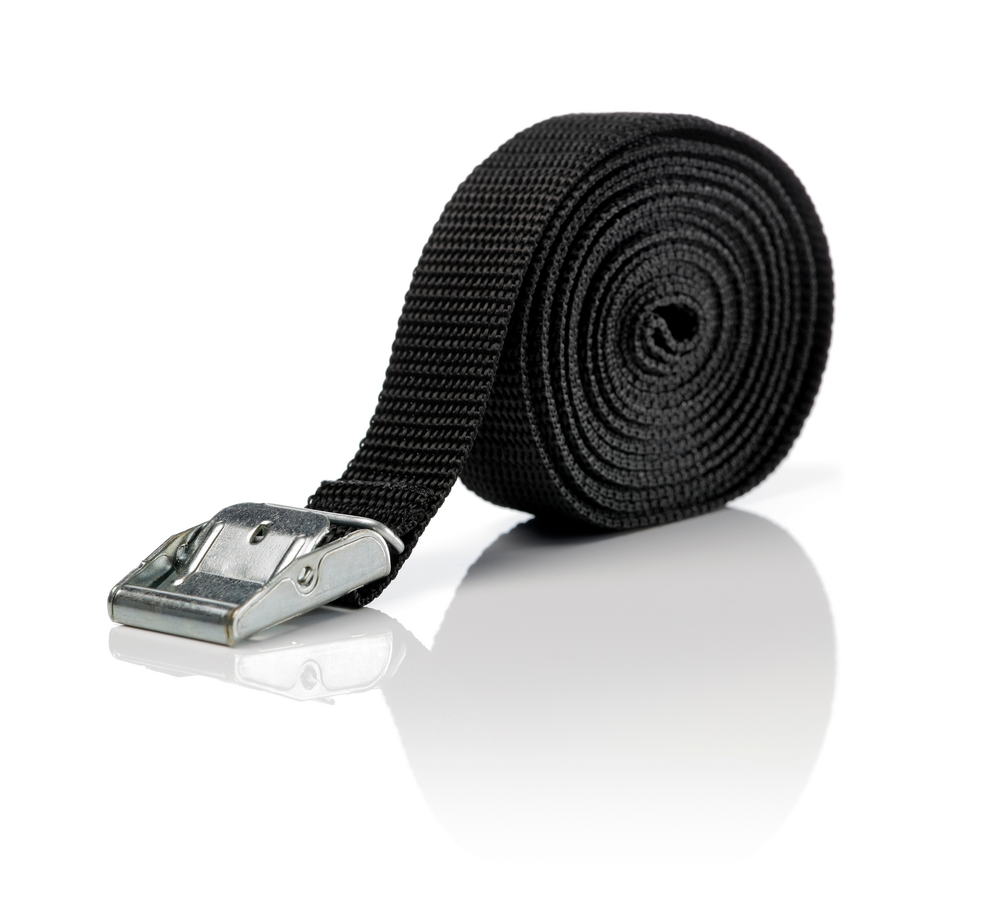
Black nylon cam lock tie down strap isolated on white with natural reflecrtion.
Are you familiar with cam straps? Do you know how to use a cam strap safely and effectively? Cam straps are pretty basic tools for tying things down. In fact, they are often referred to generically as tie down straps. What makes them cam straps as opposed to ratchet straps is the buckle that holds everything together.
Whereas a ratchet strap is a webbing strap that is secured with a stainless-steel ratchet, a cam strap utilizes the same webbing material but is secured with a cam buckle. A cam buckle features a center cam over which the webbing strap travels along with a spring-loaded grip plate. The grip plate digs into the webbing and holds it securely.
Choose the Right Size
The first step toward using cam straps like a champ is choosing the right size. If you use them frequently enough, it’s probably a good idea to get a variety of sizes. There is no point in using a strap if you have a ton of excess material left over after securing your cargo.
Any excess strap material needs to be dealt with before you can travel. So the less excess you have, the faster you get your load tied down and your wheels on the road.
Consider Your End Choices
Cam straps can be utilized as single-piece or multi-piece units. A single piece cam strap wraps entirely around the load before being threaded through the cam buckle and secured. This sort of set up represents the easiest way to use cam straps.
If you are using a multi-piece strap, the straps need to attach to anchor points in some way. The Rollercam brand offers three tie down ends: a metal hook, a metal carabiner, or a loop sewn into the polyester webbing fabric.
Regardless of the end you choose, each one is secured to an anchor point somewhere on your vehicle. Then you thread the open piece of strap material through the cam buckle on the other half and pull it tight.
Calculate Your Load Limits
Every tie-down strap is rated for a certain load limit. Cam straps are no exception. To use straps safely, you need to calculate the weight of your load and compare it against the load limit of the straps.
This is important because you need to have enough straps to handle the load. In nearly every case, this means at least two straps minimum. Some of your larger loads could require three or more straps. There is no way to know for sure without doing the math.
Be Careful of Sharp Edges
One of the biggest mistakes by users who deploy cam straps infrequently is exposing the webbing material to sharp edges. As tough as the webbing material is, it can be sliced by something sharp. That would be bad, especially if a strap let go in the middle of a trip.
The best way to prevent this sort of thing is to place edge protectors underneath strap material. Edge protectors work both ways. They protect the edges of the cargo you are carrying as well as the strap holding it down.
Maintain Your Straps
Rounding things out is a reminder to maintain your straps. Check them for damage after every use. If buckles require lubrication, follow the manufacturer’s instructions and schedule. When you store cam straps away, store them in a dry and dark place.
It is not hard to use cam straps like a champ. You just need to know how to do it and then get a little practice. In no time at all, you’ll be a real pro.

